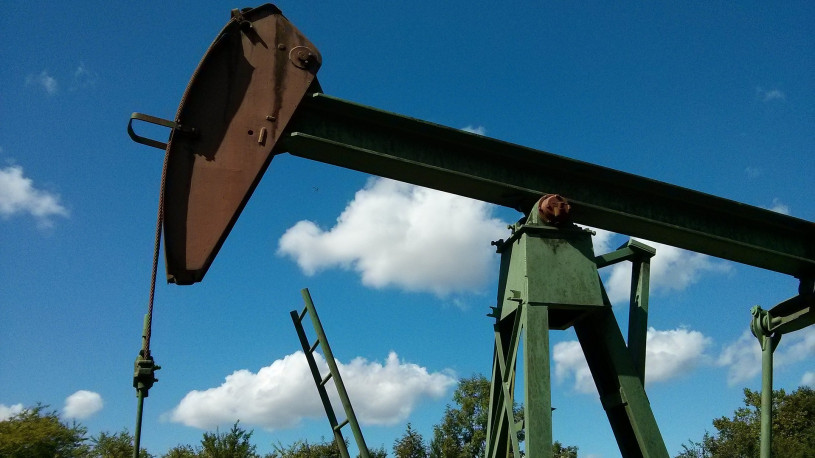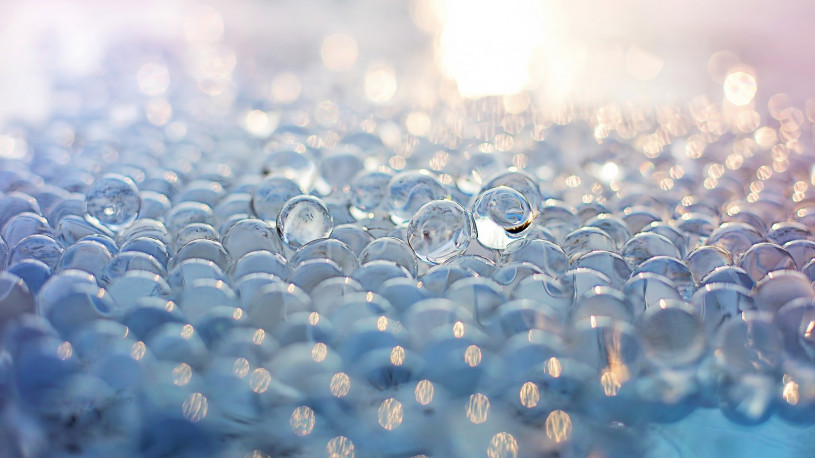-
Thoughts on Predicting Crude Oil, Ethylene and Propylene Prices for 2017
 Continue Reading
Continue ReadingA very wise man once said that calculating future prices in the chemicals industry is 60% art and 60% science. Whilst this wise man clearly needed some help with his maths, he was right to say how difficult the process is.
To outsiders, trading industrial chemicals may seem like a straight forward business. But to those that know, it is an occupation fraught with challenging logistics and long lead times; complex with economics, politics, psychology and chemistry. It is a world where a deal that does manage to get completed is filled with so much secrecy over pricing that it is difficult to find out the value of a chemical trade made today, let alone six months from now.
When faced with such obstinate problems, it is usually best to consult someone who knows more about the subject that yourself. An expert such as Paulo Moretti, former Purchasing Director at Dow Chemical and a man who understands the important relationship between the value of crude oil and the price of many basic chemicals including ethylene and propylene. He recently wrote in his excellent blog, the following on why the price of crude oil had crashed since its relatively stable high of around $100 per barrel just a few years ago:
“There are competing theories about the reasons for the Crude Oil price decline. Some conspiracy theorists believe OPEC wants to financially restrict Iran and ISIS, which are both financed by oil exports. Others believe that OPEC wants to decrease the global oil inventory so the price will increase easily. My own view is that global oil prices declined in order to delay Shale Gas (mainly in the U.S.) investments and further production.”
If the OPEC factor is the true reason behind lower oil prices, and consequently a major influence in lower Ethylene and Propylene prices, then it is worth noting that these last few years have seen troubling times for many of those oil rich members.
Low oil prices are close to collapsing the economy in Venezuela, (with the IMF declaring 700% inflation), whilst a recent Deloitte report stated that, “Most OPEC countries have little room to manoeuvre because of their reliance on oil revenues to balance national budgets. These include Iran (where oil prices of around $130/bbl are needed to balance the national budget), Venezuela, Iraq and Nigeria. Unlike the Gulf states (Kuwait, for example, requires a price in the mid-$50/bbl to balance its budget), they have no large foreign exchange reserves to fall back on to sustain state expenditure and the oil price collapse has been exacerbated by existing problems such as sanctions, political instability, security and corruption. Nigeria, for example, has been recently forced to raise interest rates and devalue its currency the naira.”
Even mighty Russia is troubled with anti-Ukraine conflict sanctions and desperately needs a higher oil price to ease the burden, with CNN reporting that, “Russia loses $2 billion for every dollar fall in the global oil price.”
Furthermore, if one of the reasons that oil prices are being kept low is to hamper ISIS (who are also heavily dependent on oil for revenue, then that reason may soon be gone, with the new Russian/US/Turkish/Iraqi coalition expected to push the Islamic State out of its Iraqi stronghold and capital in Mosul within the month (click here for BBC report).
Moretti notes that only one oil dependent country can ride the current period of low oil prices without fear, stating, “Saudi Arabia has $741 billion of currency reserves and posted a $15 billion surplus at the end of its last fiscal year. This means that it can run budget deficits for several years without causing major harm to the country’s finances.”
All of which leads him to predict that, “Crude Oil price will reach an average of US$50/BBL in 2016 and US$60/BBL in 2017. Furthermore, if those oil prices hold true, and with Natural Gas around US$2.70/mmBTU, we may predict the following impact on Ethylene and Propylene.
The above predictions are based on statistical correlation analysis over the last 10 years.”
But Moretti is aware of the near infinite number of factors that go to setting a price for global commodities such as ethylene and propylene, and touches on the relationship between the many chemical products when he writes, “Let us be very clear that the prices of Ethylene and Propylene are driven by the feedstock but also by the supply-demand balance of each one, as well as other derivatives. For example, Ethylene pricing depends on demand for middle-distillate products like gasoline, diesel, and heating oil. Additionally, propane pricing represents a ceiling price for Ethane. As result of all these drivers, Ethylene and Propylene prices have presented a delta (Propylene less Ethylene) between -$5 in 2000 to +$20 in 2011. Therefore, the prices may fluctuate much more than shown here.”
Furthermore it is important to factor in what weather forecasters call the ‘Butterfly Effect’. The concept that a butterfly’s wings beating in China today will affect air pressure, impacting the weather in Rome six months from now. A fact that makes predicting the weather and future chemical prices a thankless task, and leads even an expert such as Moretti to be even more cautious in his predictions, stating, “For now, I propose you check my price predictions at the end of 2017 to see if I was right. If not, sorry; I just gave my view.”
You can read more on Moretti’s predictions and theories on pricing strategy and tools here.
Or look into your own crystal ball and predict the Ethylene and Propylene prices of 2017 yourself.
Written Sept 2016
Photo credit: Margie Shapiro
-
A New Coating that Protects Both Metal and the Environment
 Continue Reading
Continue ReadingOne of the most difficult things about developing a new coating for metal is getting the (organic) paint to stick to the (non-organic) metal. Up until now, coating specialists have used heavy metals, such as iron phosphate, zinc phosphate or chrome to aid this process, but using these substances adds to cost and, if spilt can have a negative effect on the environment.
But now a new coating has been developed that promises to be both hard-wearing on metal and yet is kind on the environment. It is a system which uses a primer based on water and silica, followed by a layer based on polysilicates.
As the industry journal DurabilityandDesign, writes, “First, a base layer of water mixed with silica is sprayed on to the metal, creating a chemical bond with the metal. This not only cleans the metal but also deposits silica onto the surface. This coating protects the metal while also acting as a primer for the second layer, which was designed to bond well to paint.
The second layer contains polysilicates, the basis of which is silicon, reported to be the second-most abundant element in the Earth’s crust. Silicates can be modified to stick to both metals and paints.”
The breakthrough was made at Brock University in Ontario, Canada in cooperation with the business enterprise Vanchem Performance Chemicals, and was led by organic chemist Paul Zelisko, who described the coating as being based simply on water and reactive sand, so that, “If the material happens to get flushed out or it leaks, you’re effectively releasing sand and water into the environment.”
So far, tests on the new coating have shown it to be extremely effective against corrosion, as the Brock University website explains, “When the industry wants to determine whether or not a coating product is effective, the treated metal sheets are put into salt-spray chambers, where a fine mist of salt water is continually sprayed onto the metal until it starts to show signs of corrosion. The industry standard is around one thousand hours, ‘But,’ says Zelisko, ‘our coatings ranged anywhere from 1,800 to 3,000 hours, in some cases almost three times as good as what the industry requires.’”
Vanchem vice president Ian McLeod is hopeful that there will be high demand for the product, as it is part of a trend towards environmentally friendly coatings.
“The industry has switched over to greener technologies; they want to get rid of the heavy metals,” he explains. “Large corporations and companies want to be environmental stewards. They want to be able to say, ‘look at what we’re doing, we’ve replaced the old zinc phosphate technology with a new silane-based technology that doesn’t have any environmental impacts.’”
As well as being eco-friendly, the new coating is expected to be an aid to coating and paint manufacturers who wish to avoid adding heavy metals to their feedstock supply lists. Unfortunately, despite silica being an overwhelmingly abundant resource, the new process has yet to be proven entirely cost effective.
As McLeod states, “the initial price of a ‘green’ coating may be more expensive than a zinc phosphate one. But, factoring in environmental disposal, maintenance and other costs associated with non-green coatings, companies could save money in the long run.”
So for now it seems the jury is out on the true impact this coating will have on the market, as it will depend greatly on a paint supplier‘s long-term plan and the consumers’ willingness to pay extra for the eco-label. Of course future changes in coating feedstock prices, such as a price increase in heavy metals relative to silica prices, will make all the difference to this coating’s success in the marketplace.
Failing that it would be down to changes in protective coating legislation or paint manufacturing, or a shift in customer attitudes towards saving the planet. And for that you must ask yourself, “Would you pay more to ensure your coating is ‘green’?”
Photo credit: Brock University / Cathy Majtenyi
-
Charged Polymers Make Chemical Sprays ‘Stick’ or the End of Surfactants in Agribusiness
 Continue Reading
Continue ReadingAs any crop protection trader, agribusiness salesman or farmer knows, the spraying of agricultural products is inefficient. Even if the wind and temperature is perfect much of the spray will not adhere to the plant and will drip off leaves and stems onto the ground.
Researchers at MiT who have been studying the effectiveness of sprays on plants estimate that, “When farmers spray their fields with pesticides or other treatments, only 2 percent of the spray sticks to the plants.” This low retention rate not only wastes large amounts of agricultural products at great expense to the farmer, but also has a negative impact on wildlife as run off enters local ecosystems.
To date, agricultural chemists have focused on improving crop protection products’ ability to stay on leaves with the use of surfactants and similar chemical products. By adjusting the chemical make-up of a pesticide they are able to reduce surface tension, so that less of the spray bounces off, reducing waste.
However, droplets of spray are in contact with a plant for only fractions of a second, giving the chemical properties of a surfactant little to time to take effect. This started a research team from MiT looking for a completely new alternative to the problem. As team leader and associate professor of mechanical engineering at MiT Kripa Varanasi said, the team began ‘playing around with charge interactions’.
This is the idea that droplets of a product could be given positive and negative charges so that they would have a better chance of ‘sticking together’ on a leaf.
Whilst this idea may sound a little unusual, tests conducted in the laboratory have shown that the new system, “could allow farmers to get the same effects by using only 1/10 as much of the pesticide or other spray.”
The MiT website describes the breakthrough in more detail as follows;
“The new approach uses two different kinds of additives. The spray is divided into two portions, each receiving a different polymer substance. One gives the solution a negative electric charge; the other causes a positive charge. When two of the oppositely-charged droplets meet on a leaf surface, they form a hydrophilic (water attracting) ‘defect’ that sticks to the surface and increases the retention of further droplets.
Leaves of many plants have a natural tendency to be hydrophobic (water repelling), which is why they often cause droplets to bounce away. But creating these tiny hydrophilic bumps on the leaf surface strongly counteracts that tendency, the team found.”
The results were published in the scientific journal Nature Communications, and included these images of the procedural theory and practice, shown here;
“(a) Schematic of experimental set-up for simultaneous spraying of opposite polyelectrolytes. (b) Expected behaviour for the impact of a droplet with one polyelectrolyte polarity on a droplet with an oppositely charged polyelectrolyte. The coalesced drop sticks to the surface.”
“(c,d) Snapshots of simultaneous spraying on a superhydrophobic surface. Sprays with very low droplet density were used to enhance visualization and slow down the process. In the first row, the two sprayers are spraying water and the surface remains dry. Almost all droplets bounce off. Some small droplets are deposited but they are cleared as soon as another droplet impacts them. In the second row, opposite polyelectrolytes are sprayed. Individual droplets hitting the surface still bounce off. After 120 ms of spraying, the first event of a droplet of one polyelectrolyte hitting a droplet containing the opposite polyelectrolyte occurs. The coalesced drop sticks to the surface. Subsequent drops that hit this droplet also coalesce on it. Similar events happen all over the surface. Many droplets can be seen on the surface after 3 s of spraying. Scale bar, 1 cm.”
To watch a downloadable video of the spray in action, click here.
To watch the MiT video explanation of the discovery on YouTube, click here.
Given this evidence, it seems that the research team have discovered a novel and exciting new approach to combat the challenge of pesticide spray application. Naturally, further study is needed to examine how (and if) the process will function in the real world. So for that reason, one of the team, graduate student Mahak Damak, has already travelled to India to see for himself how products are applied on small farms. Whilst the team is also, “experimenting with different sprayer designs that could simplify the process further, potentially eliminating the need for two separate tanks”.
Even if this does not prove possible, it should be a simple task to use two tanks each filled with the same crop protection product, but with each tank having mixed into it the different polymer additives. Given that much of the third world uses hand-held spraying systems to treat their crops the process seems easily applicable for the majority of the world’s agriculture. The new system “should be easy to implement, and it doesn’t require extra equipment,” Damak adds.
Furthermore, the polymers used in the experiments are relatively low-cost and have no negative environmental impact, as the report itself states, “To study the effect of precipitation on drop impacts, we used two polyelectrolyte molecules. Linear polyethyleneimine was the positively charged polyelectrolyte, with NH2+ groups in solution, while polyacrylic acid was the negatively charged polyelectrolyte with COO− groups in solution.”
But the researchers then ran the experiments again using different polymer additives, and found equally impressive results. As they state, “We also show similar retention properties using different polyelectrolyte molecules … Chitosan (positively charged) and Alginate (negatively charged). These polyelectrolytes are polysaccharides that are non-toxic, biocompatible and biodegradable, which makes them excellent candidates for plant treatment”
The team is also pondering what further applications the use of positively and negatively charged polymers could have in different sprays. For example, could the same technology be applied to anti-frost chemicals for the citrus orchards in Florida?
Could two positive (or negative) charges be used to increase ‘bounce rate’ for where a spray isn’t wanted, for example in applying fertiliser to crops when it is wanted in the soil and not on leaves?
Indeed, could there be a use for the process outside of the agricultural industry? Is there a need for a more adhesive spray for hydrophobic surfaces in the paint and coatings industry? Could the technology be applied to adhesives? Or household cleaning products?
So many questions remain unanswered that it seems that the idea of positively and negatively charged chemical sprays might stick around for a while yet.
Photo credit: MiT
Video: Melanie Gonick, MiT



